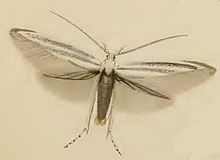
The scalloped hazel is a moth of the family Geometridae. The species was first described by Carl Alexander Clerck in 1759.

The coxcomb prominent is a moth of the family Notodontidae. It is a common species throughout the Palearctic realm from Ireland to Japan. It was first described by Carl Linnaeus in his 1758 10th edition of Systema Naturae.

Enarmonia formosana, the cherrybark tortrix or cherry-bark moth, is a small but colorful moth species of the family Tortricidae. It is native to all of northern and western Europe, ranging south to the Maghreb. North of the Alps its range extends eastwards to Siberia and Kazakhstan. Possibly and most likely introduced populations are found in Asia Minor and North America, respectively.

Coleophora gryphipennella is a moth of the family Coleophoridae. It is found in most of Europe, from Fennoscandia to the Iberian Peninsula and Italy and from Ireland to the Black Sea.

Coleophora serratella is a moth of the family Coleophoridae. It is found in Europe, Japan (Hokkaido) and North America.
Coleophora coracipennella is a moth of the family Coleophoridae. The species is found in Europe and was first described by Jacob Hübner in 1796.

Coleophora spinella, the apple-and-plum casebearer, is a moth of the family Coleophoridae. It is found in Europe, the Near East and North America.
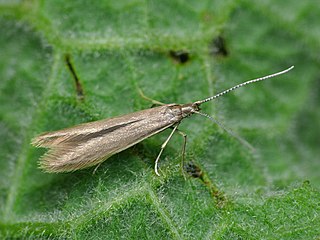
Coleophora caespititiella is a moth of the family Coleophoridae. This species is found throughout the United Kingdom and most of Europe. It is also known from North America. The Coleophoridae group are often collectively known as the case moths or case-bearers.

Parornix anglicella is a moth of the family Gracillariidae found in Asia and Europe. It was described in 1850, by the English entomologist Henry Tibbats Stainton, from a specimen from Lewisham, Kent.
Stigmella oxyacanthella is a moth of the family Nepticulidae, found in Europe and North America. The larvae are leaf miners feeding inside the leaves of trees and shrubs, such as hawthorn, apple and pear.
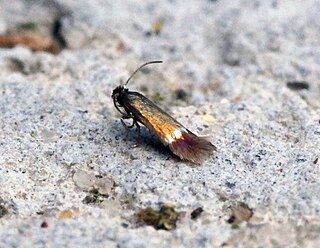
Stigmella hybnerella also known as the greenish thorn pigmy is a moth of the family Nepticulidae. It is found in all of Europe, in North Africa, the Near East, and the eastern part of the Palearctic realm. The larvae mine the leaves of trees and shrubs such as hawthorns and rowans.

Stigmella plagicolella is a moth of the family Nepticulidae described by Henry Tibbats Stainton in 1854. It is found in all of Europe and the Near East.
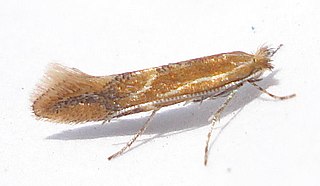
Phyllonorycter corylifoliella, the hawthorn red midget moth, is a moth of the family Gracillariidae. It is found in all of Europe.
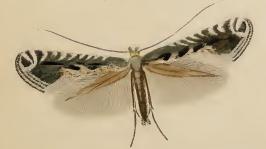
Parornix torquillella is a moth of the family Gracillariidae found in Europe. The larvae mine the leaves of Prunus species, such as blackthorn. It was described by the German entomologist Philipp Christoph Zeller in 1850, from specimens found in Florence, Leghorn and Pisa.
Coleophora trigeminella is a moth of the family Coleophoridae. It is found in most of Europe, except Ireland, the Balkan Peninsula and the Mediterranean islands.

Coleophora siccifolia is a moth of the family Coleophoridae. It is found in most of Europe.

Coleophora adjunctella is a moth of the family Coleophoridae found in Europe.
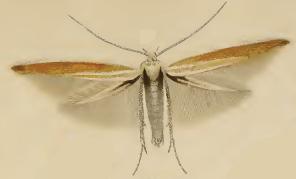
Coleophora discordella is a moth of the family Coleophoridae. It was first described by Philipp Christoph Zeller in 1849 and is found in Europe.
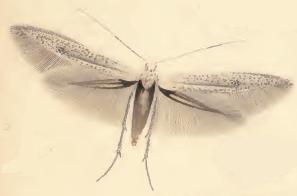
Coleophora hemerobiella, the fruit tree case moth is a moth of the family Coleophoridae, found in western Europe.
Coleophora tadzhikiella is a moth of the family Coleophoridae. It is found in Tajikistan.

